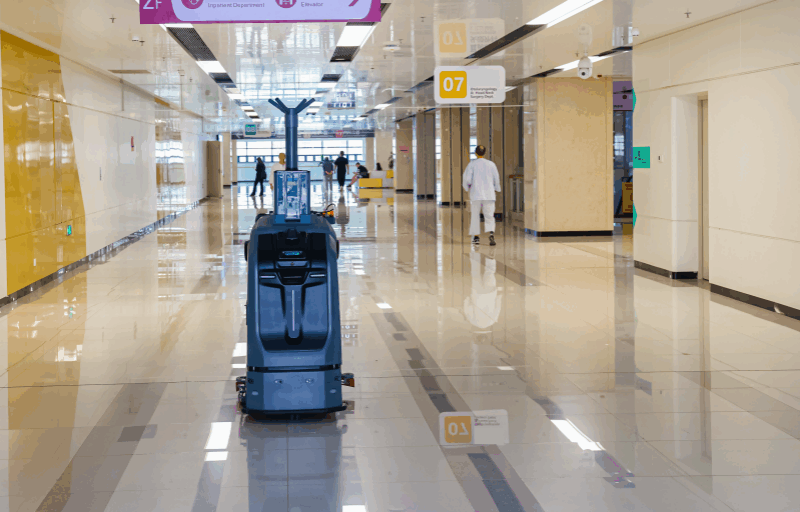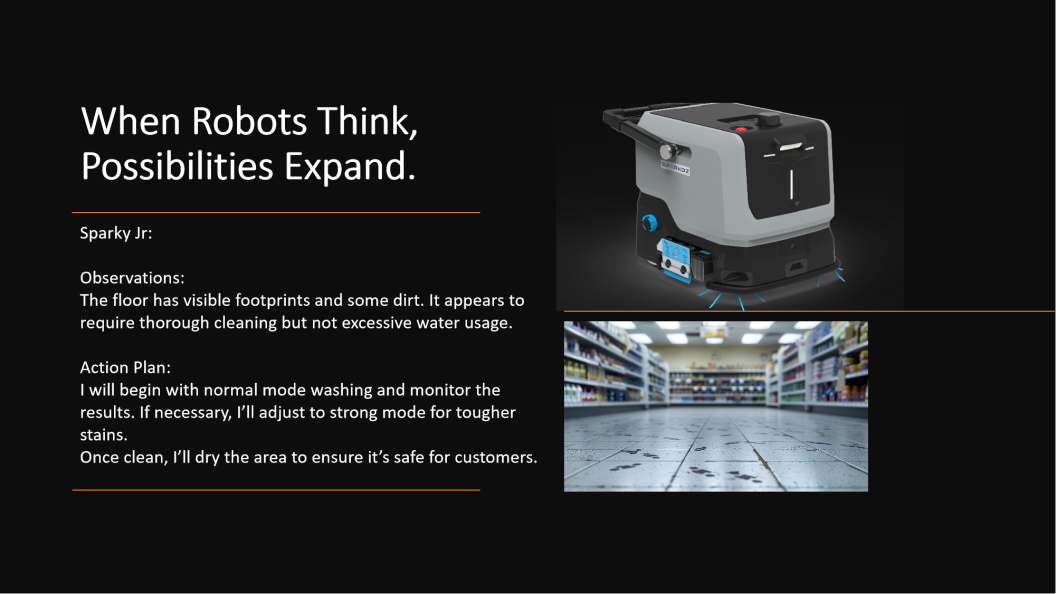As workplaces increasingly operate 24/7,such as hospitals,offices,and retail chains,the demand for quiet and efficient cleaning solutions grows.A new generation of commercial cleaning robots meets this need by combining ultra-quiet performance with intelligent data systems,ensuring cleaning is smarter and less disruptive to productivity.
I. Engineering for Silence: How Robots Are Getting Quieter
Optimised Motor and Drive Design
Manufacturers are integrating low-noise motors and intelligent drive algorithms to ensure quieter cleaning operations.Some commercial robots use stepper motor drive modules with precision control software for smooth,uninterrupted motion.These robots operate at just under 55 decibels,quieter than typical conversation levels,making them ideal for environments like hospitals and libraries.
Miniaturisation and Lightweighting
Another key advancement is the replacement of bulky components with more compact alternatives. Some companies have adopted pure vision technology in place of traditional LIDAR systems, thereby reducing both the size of the equipment and its operational noise. This miniaturisation also enhances maneuverability in tight indoor spaces.
Quiet Mode for Scene Adaptation
To accommodate varying environmental demands, many commercial cleaning robots offer adaptive silent modes. For example, in hospitals, these robots can switch to low-noise settings during nighttime cleaning sessions, thereby avoiding any disturbance to patients. From our experience, the silent mode reduced patient complaints related to cleaning by 40%.
II. Smarter Cleaning: Real-Time Data in Action
Multi-Sensor Fusion and Data Acquisition
Modern commercial cleaning robots employ multi-modal perception systems—like Sparkoz's TN70 model combines laser SLAM and stereo vision to map hospital corridors in real time. This includes information like obstacle location, floor material, and cleaning coverage, which supports both effective path planning and real-time cleaning decisions.
Check the video to see how Sparkoz robots finish a fully automatic tasks: https://youtu.be/eL4FAEYVrws?si=kyr1Sz1zC-o6VCtc
Cloud Data Platform and Intelligent Scheduling
Commercial cleaning robots utilize IoT cloud infrastructure for remote monitoring and control.These platforms facilitate multi-machine coordination and generate detailed cleaning reports,including cleaned areas and task duration.They also enable cross-floor task scheduling,minimizing human intervention and enhancing operational scalability.
AI-Driven Predictive Maintenance
By leveraging historical data and deep learning algorithms,cleaning robots can predict equipment failures and suggest proactive maintenance schedules.By analyzing cleaning frequency and component wear data,they issue timely warnings about brush replacements,minimizing downtime,extending component lifespan,and optimizing operational costs.
III. Why It Matters: Real-World Value in Healthcare, Retail, and Beyond
Silent Demand in Medical and Office Settings
Silent and intelligent cleaning is not just a technological advancement but a business advantage.Hospitals benefit from minimal disruption and enhanced hygiene compliance,while office buildings and 24-hour stores maintain spotless floors without interrupting workflows or customer experiences.Real-time data analysis allows for adjusted cleaning frequencies,reducing infection risks and maintaining hygiene standards more effectively than traditional methods.

Data-Driven Cost Optimisation
Real-time analytics also contribute significantly to cost control. By analyzing cleaning efficiency and energy consumption, organizations can generate quantifiable cost reports. According to internal reports from Sparkoz, 99 ranch supermarkets in the U.S. have been able to cut cleaning costs by up to 50% using commercial cleaning robots with data analytics.
See a demonstration here: https://youtu.be/KSP-1vQepys?si=HLsRIwD5MSKo5BMb
Adaptive Scaling for Complex Environments
In large or complex facilities such as factories,malls,and airports,commercial cleaning robots identify inefficiencies through data analysis and dynamically adjust their strategies.Whether scaling up efforts during peak hours or reallocating resources based on foot traffic,these robots offer unmatched adaptability in diverse environments.
IV. Looking Ahead: Edge Computing and Natural Interaction
Edge Computing and Low-Latency Response
The next frontier? Localized data processing. As edge computing becomes more viable, robots will soon process more data on-site, reducing reliance on cloud connections and improving responsiveness—especially in areas with spotty internet access.
Large Language Model (LLM) Interaction
In 2024,companies such as Brain Corp and Tennant started testing voice-command integration using GPT-based assistants.Operators can issue commands like "clean the lobby every hour during rainy days" using natural speech,eliminating the need for programming.This voice-controlled interaction enhances user convenience and operational flexibility.
New Artificial Intelligence Models
Next-generation AI models will enable scene understanding and autonomous decision-making. In a study at Sparkoz, if a robot detects muddy footprints in a lobby, it can automatically switch to a more powerful cleaning mode without requiring manual intervention. Looking ahead, such AI capabilities may also support security tasks or facility inspections.

Conclusion
The evolution of commercial cleaning robots is about more than automation—it’s about fitting seamlessly into human spaces. With ultra-quiet design and real-time intelligence, these machines are proving that cleanliness doesn’t need to make noise to make an impact.